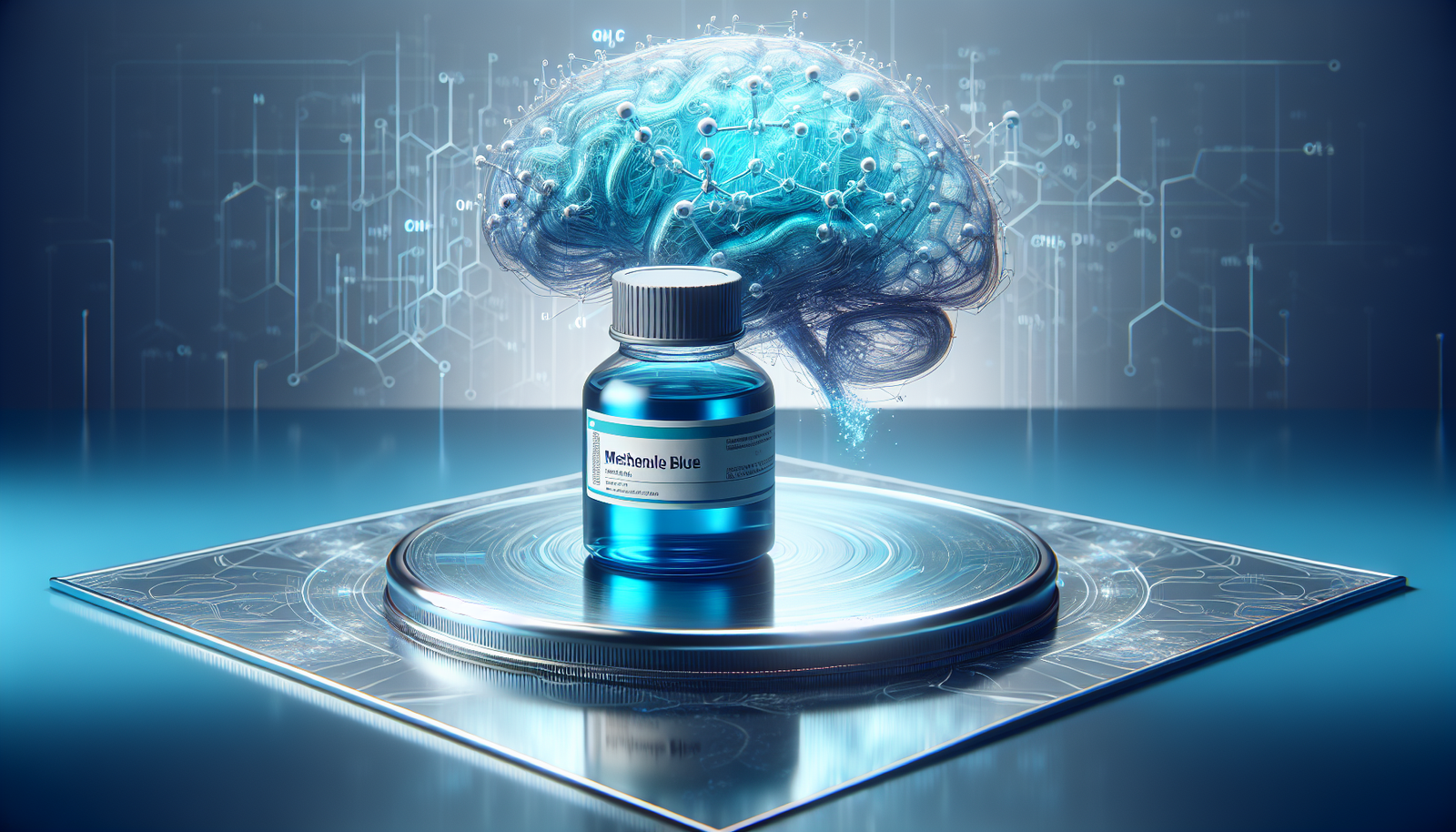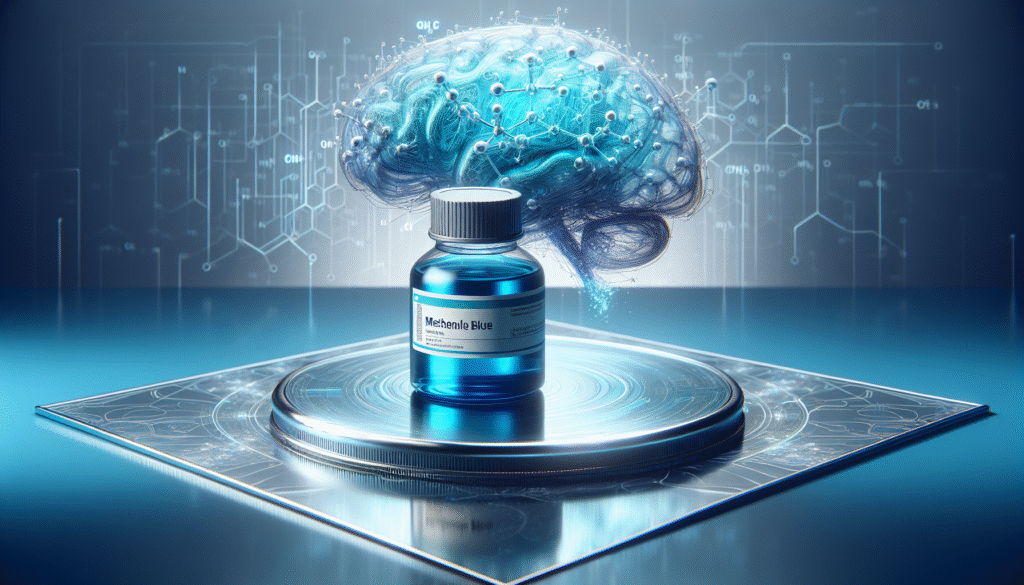
What if there was a compound that could enhance your cognitive function and potentially improve how you interact with technology? Methylene blue (MB) has garnered attention in scientific research for its potential implications in various fields, including Brain-Computer Interface (BCI) development. This article will unpack the complexities surrounding methylene blue and its relevance to BCI research.

Understanding Methylene Blue
Methylene blue is a synthetic dye that has been utilized for over a century in various medical and scientific fields. Originally employed to stain biological tissues, it has since been recognized for its pharmacological properties and potential therapeutic applications.
History and Applications
The history of methylene blue dates back to the 1870s when it was first synthesized. Over the years, it has found applications ranging from treating malaria to serving as a redox indicator in various laboratory settings. Because of its ability to penetrate biological membranes and its neuroprotective qualities, it has made its way into research for neurodegenerative diseases and, more recently, into the realm of cognitive enhancement.
Mechanism of Action
Methylene blue works primarily through its role in mitochondrial function. It acts as an electron carrier in the mitochondrial electron transport chain, thereby enhancing cellular respiration and promoting ATP production. This increased energy availability can have profound effects on brain function and cognitive performance.
The Brain-Computer Interface Explained
Understanding what a Brain-Computer Interface (BCI) entails is essential for grasping its relationship with compounds like methylene blue. BCIs are systems that facilitate direct communication between the brain and external devices, allowing for control of computers or prosthetic limbs using neural signals.
Types of BCIs
BCIs can be categorized into two primary types: invasive and non-invasive. The distinction lies in how these devices gather and interpret neural signals.
Invasive BCIs
Invasive BCIs involve the surgical implantation of electrodes directly into the brain. These systems typically provide more precise and high-resolution data, enabling detailed interpretation of brain activity. However, they come with increased risks, including infection and tissue damage.
Non-Invasive BCIs
Non-invasive BCIs utilize external sensors, usually placed on the scalp, to detect brain activity. Techniques like Electroencephalography (EEG) and functional Magnetic Resonance Imaging (fMRI) fall under this category. While they are generally safer, they typically provide less precise data than their invasive counterparts.
The Intersection of Methylene Blue and BCIs
The potential synergy between methylene blue and BCIs is an area of substantial research interest. Enhancing cognitive function and neural health may significantly optimize the effectiveness of BCIs, paving the way for advancements in this technology.
Enhancing Neural Activity
Studies have shown that methylene blue can enhance neural activity and connectivity. Its effect on mitochondrial function means that neurons can operate more efficiently, potentially leading to improved signal quality within BCIs. This enhancement could increase the reliability of signal readings, making it easier for users to interface with devices accurately.
Neuroprotection in BCI Applications
Methylene blue demonstrates neuroprotective properties, which could be particularly beneficial for individuals utilizing BCIs for rehabilitation. For instance, by reducing oxidative stress and apoptosis in neurons, methylene blue may enhance recovery outcomes for patients who have suffered strokes or traumatic brain injuries. The protective effects could theoretically improve the efficacy of BCIs as they cater to rehabilitative needs.
Cognitive Enhancement
Cognitive enhancement remains a key area of interest regarding methylene blue. Preliminary studies suggest that the compound may improve aspects of memory, learning, and overall cognitive function. This enhancement could benefit BCI users by allowing for more intuitive and streamlined control of technology based on their cognitive state or intentions.
Current Research Landscape
To contextualize the potential of methylene blue in BCI technology, it is crucial to examine the current landscape of research in both areas.
Methylene Blue in Cognitive Enhancement Studies
Many studies in the past decade have focused on the cognitive effects of methylene blue. Research has indicated that small doses of methylene blue can enhance memory retention and increase mental clarity. These findings contribute to the understanding of how enhancing cognitive function can lead to improved outcomes in BCI applications.
Advancements in Brain-Computer Interface Research
Recent advancements in BCI technology have led to increased interest in how cognitive enhancers can optimize performance. Studies are being conducted to evaluate the effectiveness of various compounds, including methylene blue, on BCI efficacy.
Promising Findings and Challenges
Preliminary findings suggest that methylene blue could enhance the functionality of BCIs. However, challenges remain. Variability in individual responses to methylene blue and complications due to dosage must be addressed. Ongoing research is crucial to establish safe and effective protocols for leveraging methylene blue in BCI contexts.

Potential Implications
The implications of integrating methylene blue into BCI research could be transformative. Here are some possible avenues for exploration.
Medical Rehabilitation
In rehabilitation settings for stroke and traumatic injuries, BCIs could be enhanced through methylene blue administration, promoting faster recovery times for patients. By augmenting cognitive functions and refining neural signaling, patients may regain control over their movements more swiftly and effectively.
Advancement in Human-Computer Interaction
Envision a world where individuals are able to interact seamlessly with technology through cognitive commands. The potential for methylene blue to enhance cognitive capabilities could lead to significant advancements in how we communicate with machines. This shift could encompass everything from more efficient data entry to the broader implications for autonomous systems.
Ethical Considerations
The integration of methylene blue into BCI technologies poses ethical questions. Cognitive enhancement raises concerns around equality of access, potential misuse, and long-term effects on human cognition. As research progresses, these ethical implications must be carefully navigated to ensure responsible application and development.
Clinical Trials and Future Directions
To substantiate the potential benefits of methylene blue in BCIs, conducting rigorous clinical trials becomes paramount. Research should aim to explore optimal dosages, long-term effects, and how best to integrate methylene blue therapy into BCI applications.
Recommended Study Designs
To achieve meaningful insight, trials should consider various study designs. For instance:
-
Randomized Control Trials (RCTs): These trials should assess the efficacy of methylene blue for cognitive enhancement in conjunction with BCI performance.
-
Longitudinal Studies: Monitoring participants over extended periods can yield data on the effects of methylene blue on neural health and cognitive function.
-
Pilot Studies: Small-scale studies can provide preliminary data to inform larger trial designs.
Collaborations Across Disciplines
Advancing research in methylene blue and BCIs will require collaboration across fields including neurobiology, pharmacology, computer science, and ethics. Such interdisciplinary approaches can foster innovative solutions and comprehensive understandings of the implications at hand.
Conclusion
The relationship between methylene blue and brain-computer interface technology is an exciting frontier, ripe with potential. By understanding the mechanisms through which methylene blue can enhance cognitive function and protect neural health, researchers can pave the way for significant advancements in BCI applications.
As you consider the ramifications of these developments, reflect on the ethical dimensions and the responsibilities associated with enhancing cognitive processes through pharmacological means. The future of methylene blue in brain-computer interface research holds promise, but it is essential to navigate this pathway carefully and thoughtfully. Your role as an informed participant in this evolving conversation can contribute to shaping the future of technology interaction and cognitive health.